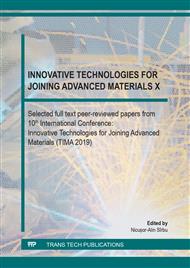p.15
p.21
p.31
p.38
p.47
p.52
p.58
p.73
p.83
Evaluation of the Cavitation Resistance of INCONEL 718, in Delivered and Respectively Heat Treated Condition
Abstract:
Inconel 718 is a very difficult metal for machining because of its high plasticity. Lately, more and more researchers are interested in using it for cavitation parts, such as the plugs and drawers of the valves. For this purpose, thermal volumetric treatments have been initiated to facilitate mechanical machining, aiming simultaneously to obtain good compression and cavitation resistance results. Therefore, this paper presents the results of cavitation erosion behavior and cavitation resistance of ICONEL 718, subjected to two thermal treatment regimes, differentiated by the duration (temperature 800 °C and residence times 5 hours, and respectively 10 hours). The assessment of the cavitation resistance provided by each heat treatment regime is based on the average durability cavitation parameter, as defined by K. Steller. The research is achieved by using the standard vibrator device with piezo - ceramic crystals from the Cavitation Laboratory of the Politechnica University of Timisoara.
Info:
Periodical:
Pages:
47-51
Citation:
Online since:
February 2020
Price:
Сopyright:
© 2020 Trans Tech Publications Ltd. All Rights Reserved
Share:
Citation:


